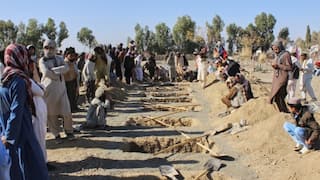'Thanks For The Ride, Mate': Chandrayaan-3's Lander Module Separates From Propulsion Module
Chandrayaan-3: Following the separation of the lander module and propulsion module, there are three Indian spacecraft orbiting the Moon.

Chandrayaan-3's lander module separated from the propulsion module on August 17, 2023, at 1:15 pm IST. The lander module will descend to a slightly lower orbit following a de-boosting operation set to occur on August 18, at around 4:00 pm IST. After the separation of the lander module and the propulsion module, the Indian Space Research Organisation (ISRO) wrote on X (formerly Twitter) that the lander module said to the propulsion module: 'Thanks for the ride, mate! 👋'
With the separation of the lander module and the propulsion module, there are three Indian spacecraft orbiting the Moon. These are: Chandrayaan-2's orbiter, and Chandrayaan-3's lander module and propulsion module.
Chandrayaan-3 Mission:
— ISRO (@isro) August 17, 2023
‘Thanks for the ride, mate! 👋’
said the Lander Module (LM).
LM is successfully separated from the Propulsion Module (PM)
LM is set to descend to a slightly lower orbit upon a deboosting planned for tomorrow around 1600 Hrs., IST.
Now, 🇮🇳 has3⃣ 🛰️🛰️🛰️… pic.twitter.com/rJKkPSr6Ct
Chandrayaan-3 consists of a lander, a rover, and a propulsion module. The rover is fitted inside the lander, and together, they are called the lander module. The propulsion module carried the lander module to a 100-kilometre circular lunar orbit, and then separated.
While the mission life of the propulsion module is three to six months, the lander module is expected to operate only for 14 Earth days, or one lunar day. ISRO wrote on X on August 17 that the propulsion module may continue its journey in lunar orbit for up to a year.
The propulsion module is equipped with a payload called Spectro-polarimetry of HAbitable Planet Earth (SHAPE). The function of SHAPE is to study the spectral and polarimetric measurements of Earth from lunar orbit. This means that SHAPE will analyse the spectro-polarimetric signatures of Earth.
According to the University of Maryland, Baltimore County (UMBC) Observatory, spectro-polarimetry is a technique which involves the polarisation of light by splitting the incoming light into its constituent colours, and then analysing the polarisation of each colour individually.
Understanding the spectro-polarimetric signatures of Earth can help scientists analyse the reflected light from exoplanets and determine whether they would qualify for habitability.
In other words, the SHAPE payload will accumulate signatures of exoplanets that may have features which qualify it for the habitability of humans.
The Unnao Rao Space Centre in Bengaluru has designed the SHAPE payload.
The propulsion module weighs 2,148 kilograms, and has a power generation capacity of 758 Watts.
Former ISRO scientist Mylswamy Annadurai said that the most important feat is the soft and secure landing of Chandrayaan-3 on the Moon, news agency ANI reported. He also said that the Vikram lander has to take its own course of action.
He explained that four separate thrusters will take the lander module to a lower orbit.
#WATCH | Bengaluru: Padma Shri & former ISRO scientist Mylswamy Annadurai on Chandrayaan-3 says, "Now the important thing is softly and securely landing on the moon and for that, the lander has to separate from the propulsion module...Now 'Vikram' has to take its own course of… https://t.co/LE6Lzndp0O pic.twitter.com/GH8wB2Jrmr
— ANI (@ANI) August 17, 2023
The lander module has a mass of 1,752 kilograms, and a power generation capacity of 738 Watts.
The Vikram lander’s payloads are Chandra's Surface Thermophysical Experiment (ChaSTE), Instrument for Lunar Seismic Activity (ILSA), Laser Retroreflector Array (LRA) Rover, and Radio Anatomy of Moon Bound Hypersensitive ionosphere and Atmosphere (RAMBHA).
ChasTE will carry out measurements of thermal properties such as thermal conductivity and temperature of elements on the lunar surface near the south pole; ILSA will measure the seismicity around the landing site and describe the structure of the lunar crust and mantle; and RAMBHA will study the gas and plasma environment.
The rover is equipped with two payloads, which are the Alpha Particle X-ray Spectrometer (APXS), and Laser Induced Breakdown Spectroscope (LIBS).
APXS will help determine the elemental composition of the lunar soil and rocks around the landing site. The elements to be studied include magnesium, aluminium, silicon, potassium, calcium, titanium and iron.
LIBS will conduct qualitative and quantitative elemental analysis in order to infer the chemical and mineralogical composition of the lunar surface.







































